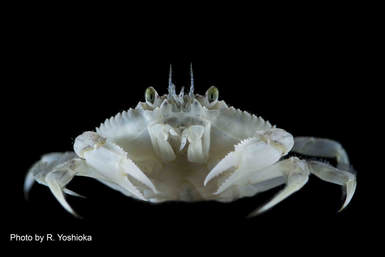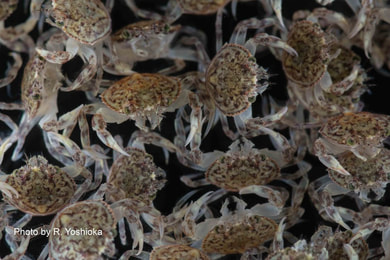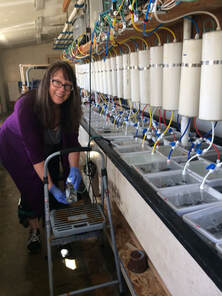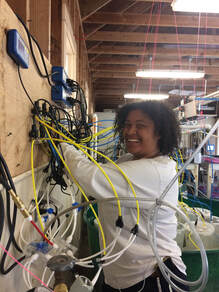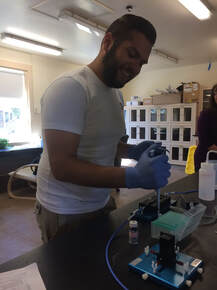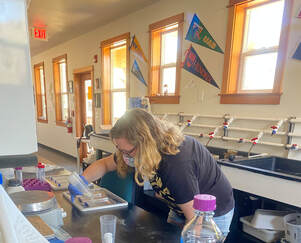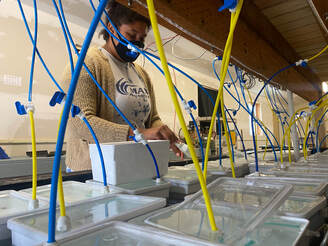Dungeness crab - Ocean acidification
|
Relatively little is known about the mechanisms that drive Dungeness crab recruitment of crab along the western coast of the US, in light that Dungeness crab (Cancer magister) is an abundant and ecologically important marine invertebrate that supports a very economically important fishery in Washington, Oregon, and California, this gap in knowledge is surprising.
Megalopae (an early swimming life history stage in crabs) are commonly expected to be swept into coastal regions where they settle (primarily in areas with soft or sandy substrates like estuaries). In Oregon, the Dungeness crab megalopae usually begin to arrive at the coast in mid-April (range mid-March to May) and generally continue to settle through September. |
|
One of my collaborators, Aaron Galloway, recently documented an extremely dense aggregation of recently settled juvenile Dungeness crabs at (densities of ~22,000- 65,000/m-2). Pulsed recruitment at these densities have only recently been described, and we have no clear indication for what may have triggered this extremely high density recruitment.
These high recruitment events tend to happen when there is naturally lower seawater pH in coastal zones along the Oregon coast. These pH levels can even be comparable to those predicted to occur with ocean acidification. Ocean acidification, defined as the reduction in seawater pH resulting from the absorption of atmospheric carbon dioxide in surface ocean waters, is an aspect of climate change that has the potential of influence a wide variety of marine organisms. |
To investigate the impacts of ocean acidification on Oregon’s Dungeness crabs, which support the largest of Oregon’s fisheries, we are working to assess behavioral and biochemical responses of juvenile Dungeness crab following exposure to seawater pH levels associated with ocean acidification with financial support from Oregon Sea Grant. Following exposure to reduced pH (offset of 0.3 pH units from ambient), we are quantifying crab ability to sense prey items and various biochemical markers indicating health, including essential fatty acids. My amazing collaborators (Erica Street, Hannah Hayes, Steven Manos, and Natalie Thompson) and I have worked on various parts of this project in the lab during summer 2019 and 2020. Stay tuned for more details!
Summer 2019
Summer 2020
